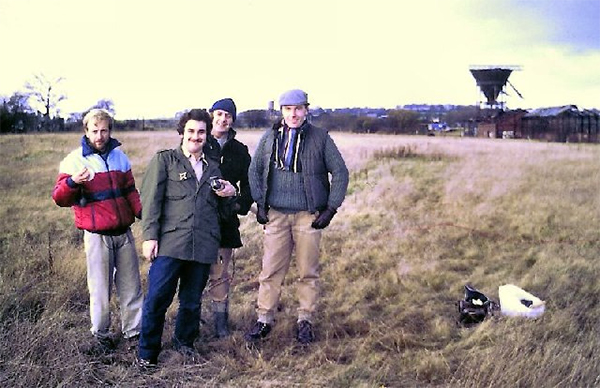
Restrictions are starting to ease, but there's still no prospect of any meetings this year and plans for a summer trip have been abandoned. The likelihood of much fieldwork this season also seems in some doubt. However this has thrown up an opportunity for me to catch up with the write-ups of previous Society projects. These include our four-year project at the Rectory (i.e. Wigan Hall) and the three seasons work on the Kirkless Iron and Steel Works site in Higher Ince. Site diaries of these projects are already online but the reports are yet to be finalised. When completed, the monographs will be sent to the national Online Access Index (OASIS) who will place them into their Archaeology Data Service (ADS). This repository is meant for all archaeological work but it is particularly useful for 'grey literature' (i.e. reports from developer funded projects which would otherwise be unavailable to the general public).
In the meantime, however, I've been busy uploading onto our website all the previous work we undertook before the advent of the internet. Our investigations into the Roman roads in the Wigan area go back to the earliest days of the Society. We made our first foray into the field in 1985 - but our researches began two years earlier when we produced a report on the road leading north out of Wigan. This highlighted two fields in front of Brimelow Farm which seemed to have escaped the ravages of Wigan's industrial past. At that time hay was being growing in the north field and, during the growing season, a distinct line could be seen crossing it. In the south field, which had been given over to grazing cattle, nothing could be detected. We looked in vain for a berm or raised bank along our projected line. In the south field, there was an embankment, particularly prominent at the south end of it. However this was dismissed as just the boundary marked on early maps.

It also wasn't on the right alignment which our research had indicated ran a few metres further into the field. Our initial work in 1985 consisted of trying to get photographic evidence of the crop mark, using various techniques such as a 15 meter monopole and even kite photography with the equipment borrowed from Manchester University. Later in the year we were also able to borrow an early type of resistivity meter and we carried out a number of scans in the north fields. More scans were taken in the south field a couple of years later but only the north field produced any results. This gave us a target for excavation and in 1988 we carried out our first ever dig. It proved to be a great success with the road being detected lying just below the surface. The truncated remains consisted of a mixture of broken river cobbles and angular flat stones interspersed with rammed gravel and clay. We even detected a shallow ditch on the west side but the cobbles just seemed to peter out on east side. Without a definitive edge it was difficult to determine width but we estimated it to be about 8 metres. We were quite pleased with our success, but it wasn't totally unexpected as a track is shown running across the field at this point on the first edition 6 inch OS map of 1849 (no sign of it on any later maps). If we could show, however, that this track originally extended into the south field, it would give great confidence that this was in deed the line of the Roman road. The following year, therefore, we opened up 3 trenches in the south field on our projected alignment. The results, however, were disappointing. The best result came from our central trench which revealed a shallow ditch but the small scatter of stones was not very convincing. It would be another decade before we returned to Brimelow. By then we had built our own resistivity meter (Newsletter No.34) and once again we had great success in the north field (Newsletter No.35). Try as we might, however, evidence of the road in the south field proved elusive.
We eventually acquired a professionally built meter in 2002 (Newsletter No.54), but the south field refused to give up its secrets. It was only when we got the opportunity to excavate in 2004, that the road was finally revealed in all its glory. The full story of Brimelow Farm is now on our website here. In fact almost all our Roman road research is now online. You can find it here.
Wigan History Podcast
This is something else to keep you entertained during lockdown. Tom Marriot approached me with the idea and a sample of what he intended (in the form of a teaser). I thought it was excellent and with some WAS help, he has now produced his first episode i.e. The Prehistoric period. Hope you enjoy it. Keep safe - BA
|



